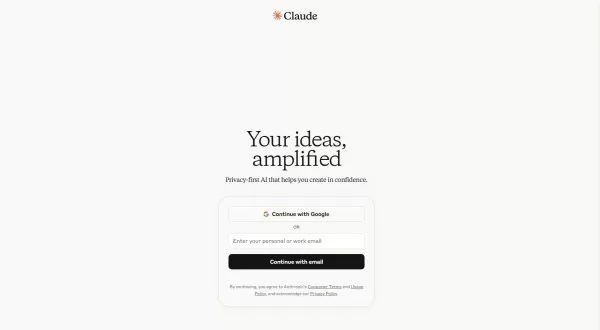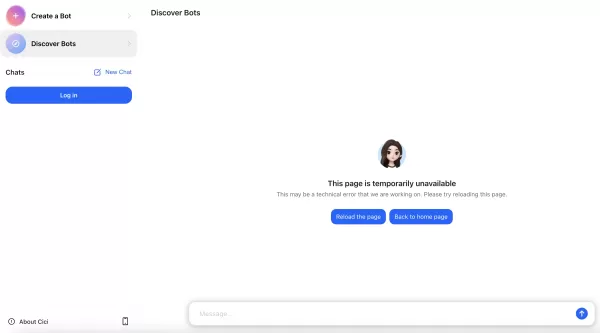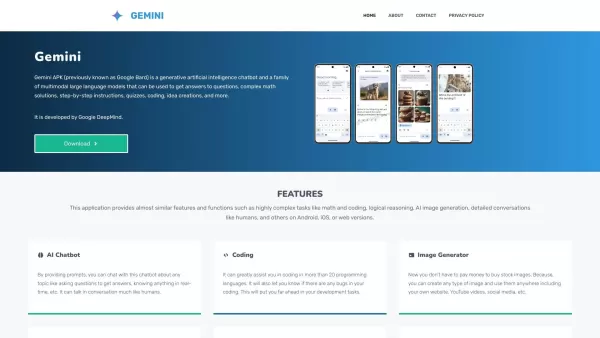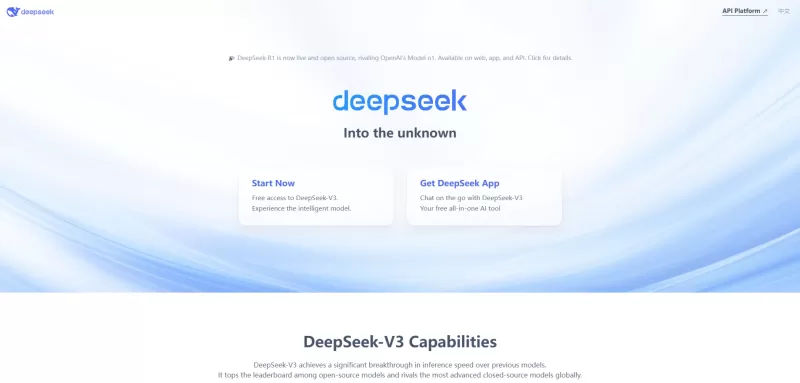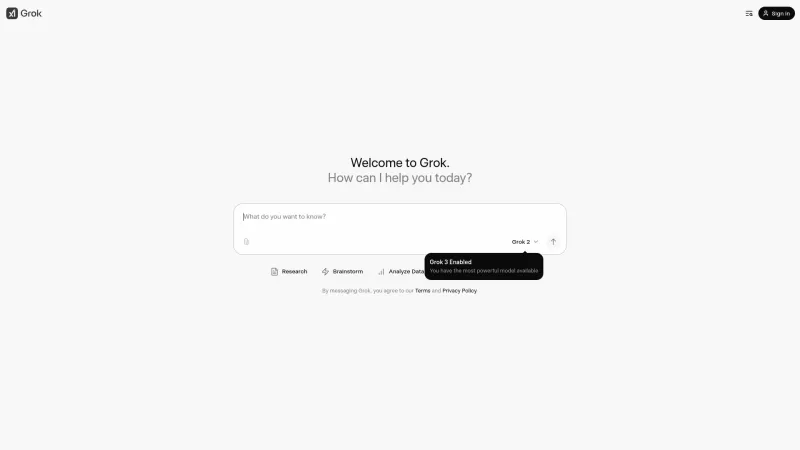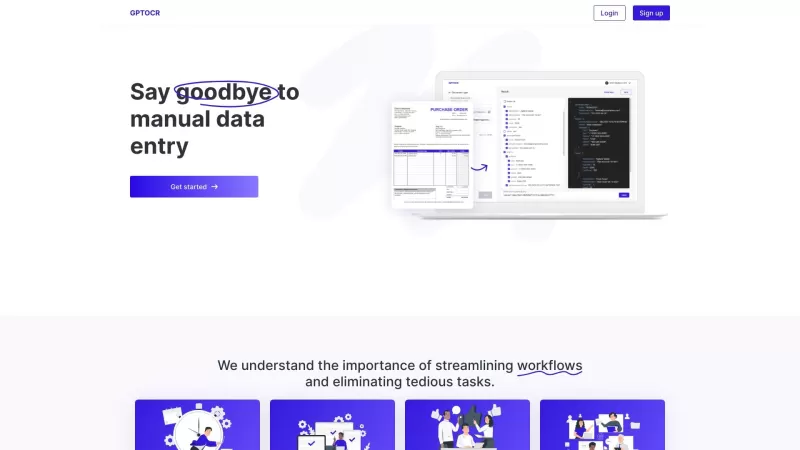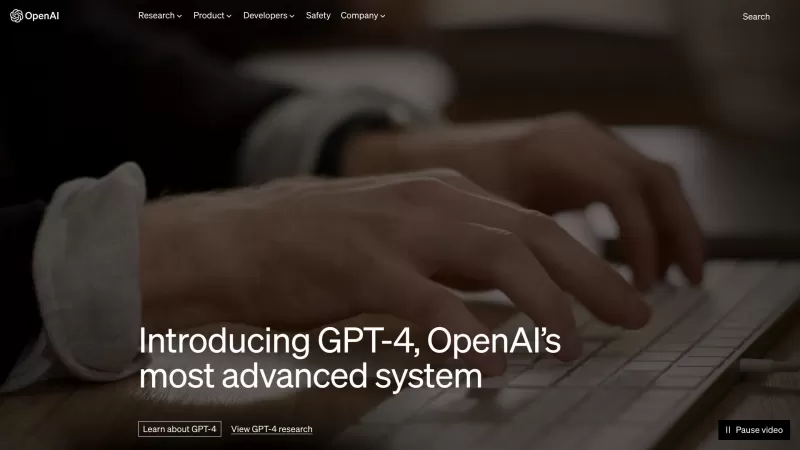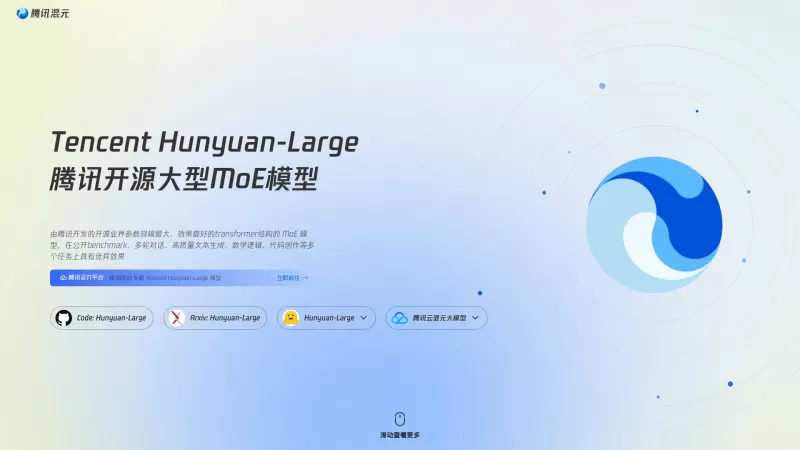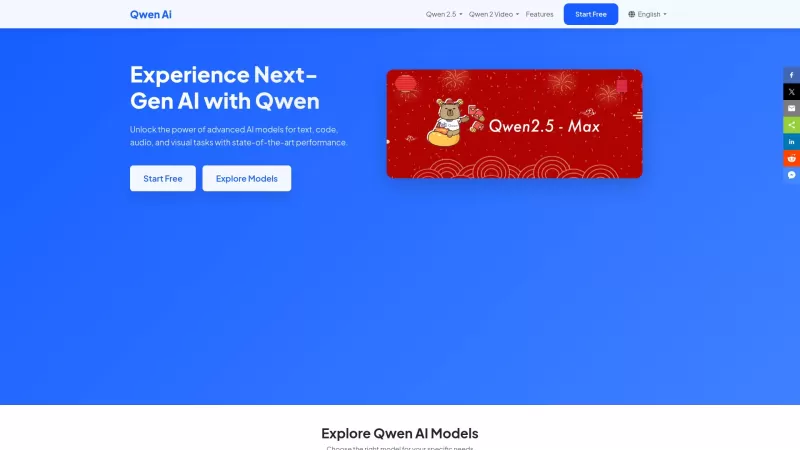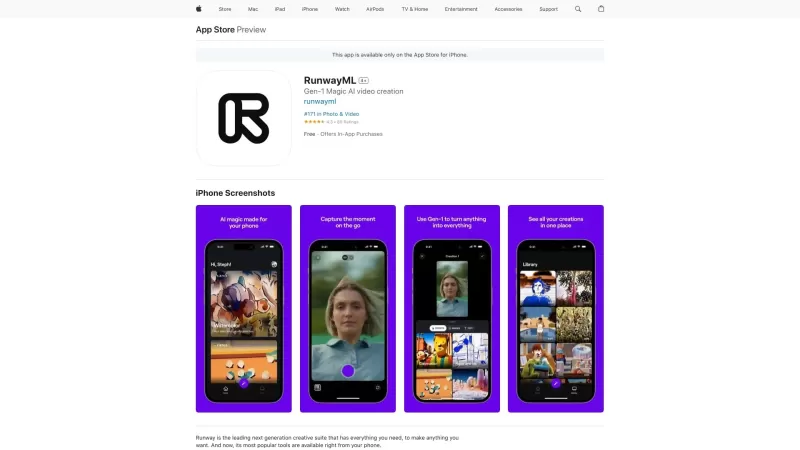MuseNet: AI-Driven Music Creation and Style Fusion
MuseNet is a groundbreaking AI designed for music composition. This advanced neural network can produce 4-minute musical pieces, incorporating up to 10 instruments. Its strength lies in blending diverse musical styles, from Mozart’s classical works to The Beatles’ pop hits. Unlike conventional music software with hardcoded rules, MuseNet learns patterns in harmony, rhythm, and style through deep learning, akin to GPT-2 but tailored for music. It predicts the next element in a sequence, whether audio or text, redefining creativity in AI-driven arts.
Key Points
MuseNet is an AI-powered neural network for music creation.
It generates 4-minute compositions using up to 10 instruments.
The AI blends styles from country to Mozart to The Beatles.
It learns music patterns from vast MIDI file datasets.
MuseNet leverages unsupervised technology similar to GPT-2.
It predicts the next element in musical sequences.
Users can upload custom MIDI files for style blending.
Users can choose instruments, styles, and sequence lengths for music creation.
Understanding MuseNet: AI Music Creation
What is MuseNet?
MuseNet marks a leap forward in artificial intelligence, crafted specifically for music composition. This cutting-edge AI generates up to 4-minute musical pieces, weaving together as many as 10 instruments. Its ability to fuse diverse musical styles stands out as a key feature.
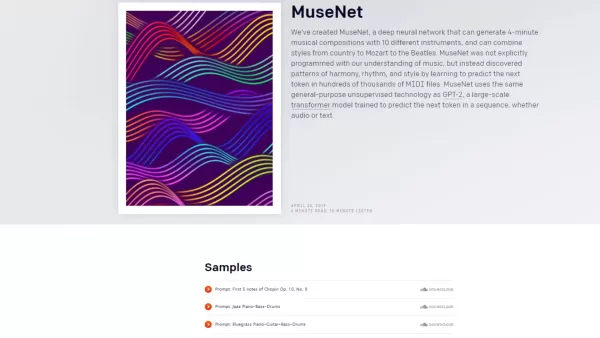
From Mozart’s symphonies to The Beatles’ anthems, MuseNet’s versatility highlights AI’s potential in creative fields.
Unlike traditional music tools that rely on predefined rules, MuseNet uses a deep learning approach, mimicking human learning processes. By analyzing extensive MIDI file collections—digital representations of musical notation—it independently identifies patterns in harmony, rhythm, and style. This method enables MuseNet to create music that is both original and innovative, showcasing AI’s creative potential.
Technically, MuseNet shares principles with GPT-2, a transformer model primarily used for text generation, but adapted for audio. Its core function is predicting the next ‘element’ in a musical sequence, such as a note, chord, or rhythm. This predictive power allows MuseNet to craft cohesive, stylistically rich compositions, paving the way for new music creation possibilities. Flexible instrument choices and style options further enhance its creative output.
MuseNet’s impact goes beyond novelty. It has the potential to transform music education, aid composers in breaking creative barriers, and deliver tailored musical experiences for listeners. As AI advances, tools like MuseNet will likely shape the future of music and creative arts.
The Deep Learning Approach of MuseNet
MuseNet’s core strength lies in its sophisticated deep learning framework. Instead of relying on rule-based coding, it learns directly from data. The foundation of its learning is a vast dataset of MIDI files, a standard format capturing musical notes, timing, and instrumentation.
By training on countless MIDI files, MuseNet gains a deep understanding of musical structures. It detects patterns in harmony, rhythm, and melody across genres, from classical to modern. This process allows it to grasp the principles defining various musical styles.
Using a transformer model akin to GPT-2, MuseNet excels at processing sequential data, making it ideal for music composition. It predicts the next musical ‘element’—a note, chord, or rhythm—based on prior sequences. This enables MuseNet to create compositions that align with established musical norms.
Moreover, its deep learning approach fosters musical innovation. Free from rigid programming, MuseNet generates novel combinations of notes, rhythms, and harmonies. This results in music that feels both familiar and fresh, reflecting its ability to learn from tradition while exploring new creative paths.
The system’s design supports customizable elements, empowering musicians and enthusiasts to fine-tune the composition process. This ensures the music is technically precise and aligned with user preferences, heralding a new era of AI-driven creativity.
Exploring MuseNet’s Features and Capabilities
Custom MIDI Upload and Style Fusion
One of MuseNet’s standout features is its style fusion through custom MIDI uploads.
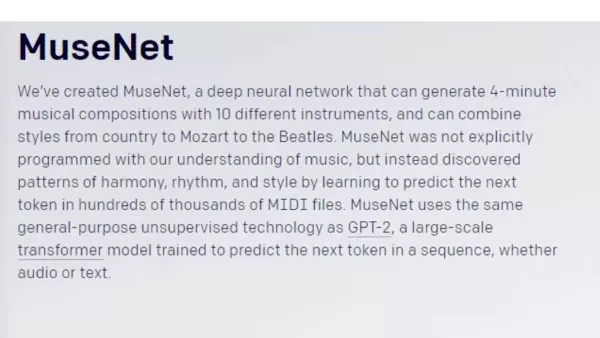
This feature lets users input their own musical ideas or existing works into MuseNet, shaping the style and direction of the output. It enhances the AI’s flexibility, allowing users to experiment with unique style combinations and create highly personalized compositions.
When a user uploads a MIDI file, MuseNet analyzes its musical traits, such as melody, harmony, and rhythm. It then incorporates these traits into its creative process, producing music that echoes the uploaded file’s style. This is ideal for composers exploring variations or musicians applying one genre’s style to another.
For instance, a composer might upload a MIDI file with a simple piano melody and select a style like ‘jazz’ or ‘baroque.’ MuseNet would then reimagine the melody in that genre, blending the original melody with the chosen style’s harmonic and rhythmic traits. This style fusion opens new creative avenues and fosters collaboration between humans and AI.
The MIDI upload feature also supports complex style blends, such as merging multiple genres or creating entirely new ones. Users can upload MIDI files from different musical traditions and direct MuseNet to combine their elements, resulting in innovative, boundary-pushing music.
Instrument Selection and Sequence Control
MuseNet offers extensive control over the instrumental and structural aspects of generated music. The instrument selection feature allows users to specify which instruments to include, enabling tailored soundscapes and textures. Options include piano, strings, drums, harp, guitar, and bass, supporting diverse arrangements.
This feature lets users steer the AI toward specific sounds or ensembles. For example, choosing piano, strings, and harp can evoke a classical or cinematic mood, while drums, guitar, and bass might create a rock or pop vibe. This control adds artistic depth to the creative process.
Sequence control is another powerful feature. Sequences represent individual musical elements, like notes, chords, or rhythms. By adjusting the sequence length, users can influence the music’s duration and complexity. Longer sequences produce intricate, extended compositions, while shorter ones yield concise pieces.
This feature is ideal for tailoring music to specific needs. A low sequence count might create a brief jingle, while a higher count could produce a full song. This flexibility lets users adapt MuseNet to their creative goals.
Getting Started with MuseNet: A Step-by-Step Guide
Step 1: Accessing MuseNet
To begin creating music with MuseNet, access its platform. While the original MuseNet model may not be publicly available as initially presented, similar AI music tools are accessible online with comparable features. These are typically found via websites or APIs for developers.
Once you access a platform, explore its interface. Most offer intuitive designs with options for selecting styles, instruments, and other settings. Familiarizing yourself with the layout is key to effectively managing the music creation process.
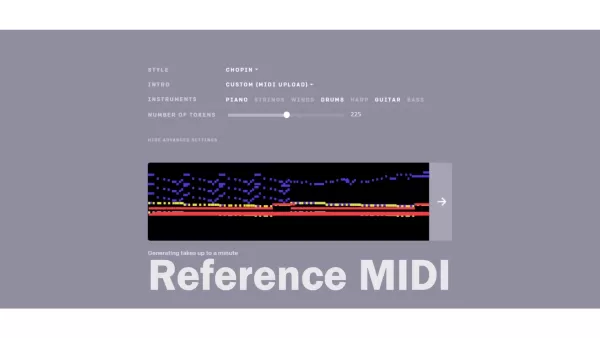
Step 2: Selecting Musical Styles and Instruments
After accessing the platform, choose your desired musical style and instruments. Most AI music tools provide predefined styles like classical, jazz, pop, or electronic. Select a style that matches your creative vision. Then, pick the instruments for MuseNet to use, as they significantly shape the music’s sound and mood. Experiment with different style and instrument combinations to uncover unique musical possibilities.
Start by selecting a style, such as ‘Beethoven’ or ‘Chopin,’ to set the composition’s tone. Then, choose your instruments. The AI’s versatility allows you to craft music that aligns with your artistic goals.
Step 3: MIDI File Upload (Optional)
If you have a custom MIDI file to influence the music, upload it to the platform. The file acts as a stylistic guide for MuseNet, shaping the generated output. Ensure the MIDI file is high-quality and reflects your desired musical traits. While optional, this step is powerful for creating music that embodies your unique ideas.
Verify that the MIDI file aligns with your intended style and understand the platform’s upload process.
Step 4: Generating Music
Once you’ve set the style, instruments, and optionally uploaded a MIDI file, you’re ready to create music. Click the ‘Generate’ button or equivalent to start the process. MuseNet’s algorithms will craft a composition based on your settings. Generation may take a moment, depending on the music’s complexity and the platform’s processing power. After completion, listen to the output and assess the results.
Sequence control may be available to adjust the music’s structure. Review the platform’s documentation to ensure proper use.
Step 5: Refining and Customizing
After generating music, refine it to better match your vision. Most platforms allow adjustments to tempo, key, or dynamics. Experiment with these to perfect the composition. You can also regenerate variations of the same idea, exploring diverse musical outcomes and uncovering unexpected results.
Pricing and Availability of AI Music Generators
Understanding the Costs
Pricing for AI music generators varies by platform and features. Some offer free access with limited capabilities, while others require subscriptions or one-time purchases for full functionality.
Factors affecting cost include available instruments, style variety, MIDI upload options, and control over the generation process. Before choosing a platform, review its pricing and ensure it fits your budget and needs. Look for trial periods or money-back guarantees to test suitability.
Advantages and Disadvantages of Using AI Music Generators
Pros
Boosts creativity and sparks new ideas.
Saves time in music composition tasks.
Enables non-musicians to create music.
Offers customizable outputs for specific needs.
Supports a wide range of styles and instruments.
Cons
May lack originality in generated music.
Reliance on AI could constrain creativity.
Poses licensing and copyright challenges for commercial use.
Faces technical limitations in current AI models.
Raises ethical concerns about AI replacing human musicians.
Key Features of AI Music Generators
Exploring the Capabilities
AI music generators provide innovative tools for music creation. Key features include:
- Style Selection: Choose from styles like classical, jazz, pop, or electronic.
- Instrument Selection: Specify instruments for tailored compositions.
- MIDI File Upload: Use custom files as stylistic references.
- Parameter Adjustment: Fine-tune tempo, key, and dynamics.
- Iterative Generation: Create multiple variations to explore diverse outcomes.
Some platforms also offer real-time collaboration, AI-assisted mixing, and music export in various formats.
Use Cases: Applications of AI Music Generation
Diverse Applications
AI music generators serve various purposes across industries. Key applications include:
- Music Education: Support learning of theory and composition.
- Creative Inspiration: Aid composers in overcoming creative hurdles.
- Game Development: Craft dynamic video game soundtracks.
- Film Scoring: Produce original scores for films and documentaries.
- Advertising: Create engaging jingles and background music.
They also enable personalized music experiences, royalty-free music for commercial use, and new forms of interactive art.
FAQ
Is MuseNet free to use?
The original MuseNet model may not be publicly accessible in its initial form, but similar AI music tools are available online. Some offer free access with limited features, while others require subscriptions or purchases for full access. Pricing varies by platform and features. Explore options to find one that suits your budget and creative needs.
Can I use MuseNet to create commercial music?
Using AI-generated music for commercial purposes depends on the platform’s licensing terms. Some allow commercial use, while others restrict it. Review the platform’s terms of service and comply with licensing requirements. Be mindful of copyright issues when incorporating copyrighted material.
Related Questions
How does MuseNet compare to other AI music generators?
MuseNet stands out with its deep learning approach, autonomously identifying patterns from extensive MIDI datasets. Its ability to blend styles from classical to modern makes it unique, serving music education, composition support, and personalized experiences. Other AI music generators differ in methods, dataset sizes, and user control. Here’s a comparison:Feature | MuseNet | Other AI Music GeneratorsLearning Approach | Deep learning from MIDI files | Rule-based or neural networksStyle Versatility | Classical to modern | Varies by platformInstrument Variety | Up to 10 instruments | Varies by platformUser Control | Style and instrument control | Varies, often more adjustableUse Cases | Education, composition, personalization | Varies by platformCost | Varies by platform | Free to subscription-basedEach platform offers unique features and pricing, with MuseNet excelling in deep learning and style versatility for innovative music creation.
Related article
 Walmart Achieves Enterprise AI Scale With Unified Framework Driving Thousands of Use Cases
Walmart is pioneering enterprise-scale implementation of autonomous AI systems through an engineering-driven approach to trust architecture. Their VP of Emerging Technology Desirée Gosby revealed at VB Transform 2025 how the retail leader operational
Walmart Achieves Enterprise AI Scale With Unified Framework Driving Thousands of Use Cases
Walmart is pioneering enterprise-scale implementation of autonomous AI systems through an engineering-driven approach to trust architecture. Their VP of Emerging Technology Desirée Gosby revealed at VB Transform 2025 how the retail leader operational
 Windows Adds Support for AI App Interconnect Standard
Microsoft is doubling down on its AI strategy for Windows with two major developments: native integration of the Model Context Protocol (MCP) and the introduction of Windows AI Foundry. These foundational moves pave the way for Microsoft's vision of
Windows Adds Support for AI App Interconnect Standard
Microsoft is doubling down on its AI strategy for Windows with two major developments: native integration of the Model Context Protocol (MCP) and the introduction of Windows AI Foundry. These foundational moves pave the way for Microsoft's vision of
 Unlock Success with AI-Powered Proposal Writing: Your Definitive Guide
In today's competitive business landscape, effective proposal creation can make or break deals. Proposal Kit revolutionizes this process through its cutting-edge AI integration with ChatGPT, enabling professionals to craft persuasive proposals with u
Comments (0)
0/200
Unlock Success with AI-Powered Proposal Writing: Your Definitive Guide
In today's competitive business landscape, effective proposal creation can make or break deals. Proposal Kit revolutionizes this process through its cutting-edge AI integration with ChatGPT, enabling professionals to craft persuasive proposals with u
Comments (0)
0/200
MuseNet is a groundbreaking AI designed for music composition. This advanced neural network can produce 4-minute musical pieces, incorporating up to 10 instruments. Its strength lies in blending diverse musical styles, from Mozart’s classical works to The Beatles’ pop hits. Unlike conventional music software with hardcoded rules, MuseNet learns patterns in harmony, rhythm, and style through deep learning, akin to GPT-2 but tailored for music. It predicts the next element in a sequence, whether audio or text, redefining creativity in AI-driven arts.
Key Points
MuseNet is an AI-powered neural network for music creation.
It generates 4-minute compositions using up to 10 instruments.
The AI blends styles from country to Mozart to The Beatles.
It learns music patterns from vast MIDI file datasets.
MuseNet leverages unsupervised technology similar to GPT-2.
It predicts the next element in musical sequences.
Users can upload custom MIDI files for style blending.
Users can choose instruments, styles, and sequence lengths for music creation.
Understanding MuseNet: AI Music Creation
What is MuseNet?
MuseNet marks a leap forward in artificial intelligence, crafted specifically for music composition. This cutting-edge AI generates up to 4-minute musical pieces, weaving together as many as 10 instruments. Its ability to fuse diverse musical styles stands out as a key feature.

From Mozart’s symphonies to The Beatles’ anthems, MuseNet’s versatility highlights AI’s potential in creative fields.
Unlike traditional music tools that rely on predefined rules, MuseNet uses a deep learning approach, mimicking human learning processes. By analyzing extensive MIDI file collections—digital representations of musical notation—it independently identifies patterns in harmony, rhythm, and style. This method enables MuseNet to create music that is both original and innovative, showcasing AI’s creative potential.
Technically, MuseNet shares principles with GPT-2, a transformer model primarily used for text generation, but adapted for audio. Its core function is predicting the next ‘element’ in a musical sequence, such as a note, chord, or rhythm. This predictive power allows MuseNet to craft cohesive, stylistically rich compositions, paving the way for new music creation possibilities. Flexible instrument choices and style options further enhance its creative output.
MuseNet’s impact goes beyond novelty. It has the potential to transform music education, aid composers in breaking creative barriers, and deliver tailored musical experiences for listeners. As AI advances, tools like MuseNet will likely shape the future of music and creative arts.
The Deep Learning Approach of MuseNet
MuseNet’s core strength lies in its sophisticated deep learning framework. Instead of relying on rule-based coding, it learns directly from data. The foundation of its learning is a vast dataset of MIDI files, a standard format capturing musical notes, timing, and instrumentation.
By training on countless MIDI files, MuseNet gains a deep understanding of musical structures. It detects patterns in harmony, rhythm, and melody across genres, from classical to modern. This process allows it to grasp the principles defining various musical styles.
Using a transformer model akin to GPT-2, MuseNet excels at processing sequential data, making it ideal for music composition. It predicts the next musical ‘element’—a note, chord, or rhythm—based on prior sequences. This enables MuseNet to create compositions that align with established musical norms.
Moreover, its deep learning approach fosters musical innovation. Free from rigid programming, MuseNet generates novel combinations of notes, rhythms, and harmonies. This results in music that feels both familiar and fresh, reflecting its ability to learn from tradition while exploring new creative paths.
The system’s design supports customizable elements, empowering musicians and enthusiasts to fine-tune the composition process. This ensures the music is technically precise and aligned with user preferences, heralding a new era of AI-driven creativity.
Exploring MuseNet’s Features and Capabilities
Custom MIDI Upload and Style Fusion
One of MuseNet’s standout features is its style fusion through custom MIDI uploads.

This feature lets users input their own musical ideas or existing works into MuseNet, shaping the style and direction of the output. It enhances the AI’s flexibility, allowing users to experiment with unique style combinations and create highly personalized compositions.
When a user uploads a MIDI file, MuseNet analyzes its musical traits, such as melody, harmony, and rhythm. It then incorporates these traits into its creative process, producing music that echoes the uploaded file’s style. This is ideal for composers exploring variations or musicians applying one genre’s style to another.
For instance, a composer might upload a MIDI file with a simple piano melody and select a style like ‘jazz’ or ‘baroque.’ MuseNet would then reimagine the melody in that genre, blending the original melody with the chosen style’s harmonic and rhythmic traits. This style fusion opens new creative avenues and fosters collaboration between humans and AI.
The MIDI upload feature also supports complex style blends, such as merging multiple genres or creating entirely new ones. Users can upload MIDI files from different musical traditions and direct MuseNet to combine their elements, resulting in innovative, boundary-pushing music.
Instrument Selection and Sequence Control
MuseNet offers extensive control over the instrumental and structural aspects of generated music. The instrument selection feature allows users to specify which instruments to include, enabling tailored soundscapes and textures. Options include piano, strings, drums, harp, guitar, and bass, supporting diverse arrangements.
This feature lets users steer the AI toward specific sounds or ensembles. For example, choosing piano, strings, and harp can evoke a classical or cinematic mood, while drums, guitar, and bass might create a rock or pop vibe. This control adds artistic depth to the creative process.
Sequence control is another powerful feature. Sequences represent individual musical elements, like notes, chords, or rhythms. By adjusting the sequence length, users can influence the music’s duration and complexity. Longer sequences produce intricate, extended compositions, while shorter ones yield concise pieces.
This feature is ideal for tailoring music to specific needs. A low sequence count might create a brief jingle, while a higher count could produce a full song. This flexibility lets users adapt MuseNet to their creative goals.
Getting Started with MuseNet: A Step-by-Step Guide
Step 1: Accessing MuseNet
To begin creating music with MuseNet, access its platform. While the original MuseNet model may not be publicly available as initially presented, similar AI music tools are accessible online with comparable features. These are typically found via websites or APIs for developers.
Once you access a platform, explore its interface. Most offer intuitive designs with options for selecting styles, instruments, and other settings. Familiarizing yourself with the layout is key to effectively managing the music creation process.

Step 2: Selecting Musical Styles and Instruments
After accessing the platform, choose your desired musical style and instruments. Most AI music tools provide predefined styles like classical, jazz, pop, or electronic. Select a style that matches your creative vision. Then, pick the instruments for MuseNet to use, as they significantly shape the music’s sound and mood. Experiment with different style and instrument combinations to uncover unique musical possibilities.
Start by selecting a style, such as ‘Beethoven’ or ‘Chopin,’ to set the composition’s tone. Then, choose your instruments. The AI’s versatility allows you to craft music that aligns with your artistic goals.
Step 3: MIDI File Upload (Optional)
If you have a custom MIDI file to influence the music, upload it to the platform. The file acts as a stylistic guide for MuseNet, shaping the generated output. Ensure the MIDI file is high-quality and reflects your desired musical traits. While optional, this step is powerful for creating music that embodies your unique ideas.
Verify that the MIDI file aligns with your intended style and understand the platform’s upload process.
Step 4: Generating Music
Once you’ve set the style, instruments, and optionally uploaded a MIDI file, you’re ready to create music. Click the ‘Generate’ button or equivalent to start the process. MuseNet’s algorithms will craft a composition based on your settings. Generation may take a moment, depending on the music’s complexity and the platform’s processing power. After completion, listen to the output and assess the results.
Sequence control may be available to adjust the music’s structure. Review the platform’s documentation to ensure proper use.
Step 5: Refining and Customizing
After generating music, refine it to better match your vision. Most platforms allow adjustments to tempo, key, or dynamics. Experiment with these to perfect the composition. You can also regenerate variations of the same idea, exploring diverse musical outcomes and uncovering unexpected results.
Pricing and Availability of AI Music Generators
Understanding the Costs
Pricing for AI music generators varies by platform and features. Some offer free access with limited capabilities, while others require subscriptions or one-time purchases for full functionality.
Factors affecting cost include available instruments, style variety, MIDI upload options, and control over the generation process. Before choosing a platform, review its pricing and ensure it fits your budget and needs. Look for trial periods or money-back guarantees to test suitability.
Advantages and Disadvantages of Using AI Music Generators
Pros
Boosts creativity and sparks new ideas.
Saves time in music composition tasks.
Enables non-musicians to create music.
Offers customizable outputs for specific needs.
Supports a wide range of styles and instruments.
Cons
May lack originality in generated music.
Reliance on AI could constrain creativity.
Poses licensing and copyright challenges for commercial use.
Faces technical limitations in current AI models.
Raises ethical concerns about AI replacing human musicians.
Key Features of AI Music Generators
Exploring the Capabilities
AI music generators provide innovative tools for music creation. Key features include:
- Style Selection: Choose from styles like classical, jazz, pop, or electronic.
- Instrument Selection: Specify instruments for tailored compositions.
- MIDI File Upload: Use custom files as stylistic references.
- Parameter Adjustment: Fine-tune tempo, key, and dynamics.
- Iterative Generation: Create multiple variations to explore diverse outcomes.
Some platforms also offer real-time collaboration, AI-assisted mixing, and music export in various formats.
Use Cases: Applications of AI Music Generation
Diverse Applications
AI music generators serve various purposes across industries. Key applications include:
- Music Education: Support learning of theory and composition.
- Creative Inspiration: Aid composers in overcoming creative hurdles.
- Game Development: Craft dynamic video game soundtracks.
- Film Scoring: Produce original scores for films and documentaries.
- Advertising: Create engaging jingles and background music.
They also enable personalized music experiences, royalty-free music for commercial use, and new forms of interactive art.
FAQ
Is MuseNet free to use?
The original MuseNet model may not be publicly accessible in its initial form, but similar AI music tools are available online. Some offer free access with limited features, while others require subscriptions or purchases for full access. Pricing varies by platform and features. Explore options to find one that suits your budget and creative needs.
Can I use MuseNet to create commercial music?
Using AI-generated music for commercial purposes depends on the platform’s licensing terms. Some allow commercial use, while others restrict it. Review the platform’s terms of service and comply with licensing requirements. Be mindful of copyright issues when incorporating copyrighted material.
Related Questions
How does MuseNet compare to other AI music generators?
MuseNet stands out with its deep learning approach, autonomously identifying patterns from extensive MIDI datasets. Its ability to blend styles from classical to modern makes it unique, serving music education, composition support, and personalized experiences. Other AI music generators differ in methods, dataset sizes, and user control. Here’s a comparison:Feature | MuseNet | Other AI Music GeneratorsLearning Approach | Deep learning from MIDI files | Rule-based or neural networksStyle Versatility | Classical to modern | Varies by platformInstrument Variety | Up to 10 instruments | Varies by platformUser Control | Style and instrument control | Varies, often more adjustableUse Cases | Education, composition, personalization | Varies by platformCost | Varies by platform | Free to subscription-basedEach platform offers unique features and pricing, with MuseNet excelling in deep learning and style versatility for innovative music creation.
 Walmart Achieves Enterprise AI Scale With Unified Framework Driving Thousands of Use Cases
Walmart is pioneering enterprise-scale implementation of autonomous AI systems through an engineering-driven approach to trust architecture. Their VP of Emerging Technology Desirée Gosby revealed at VB Transform 2025 how the retail leader operational
Walmart Achieves Enterprise AI Scale With Unified Framework Driving Thousands of Use Cases
Walmart is pioneering enterprise-scale implementation of autonomous AI systems through an engineering-driven approach to trust architecture. Their VP of Emerging Technology Desirée Gosby revealed at VB Transform 2025 how the retail leader operational
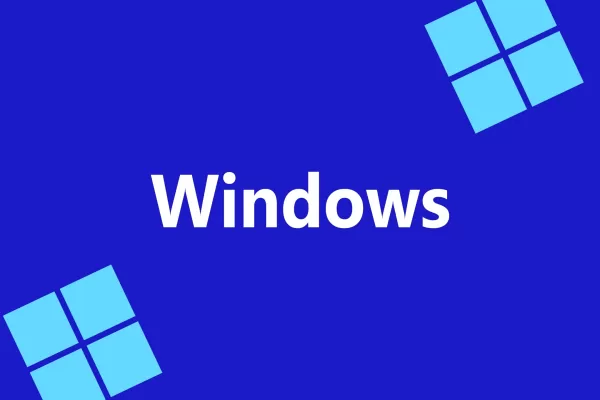 Windows Adds Support for AI App Interconnect Standard
Microsoft is doubling down on its AI strategy for Windows with two major developments: native integration of the Model Context Protocol (MCP) and the introduction of Windows AI Foundry. These foundational moves pave the way for Microsoft's vision of
Windows Adds Support for AI App Interconnect Standard
Microsoft is doubling down on its AI strategy for Windows with two major developments: native integration of the Model Context Protocol (MCP) and the introduction of Windows AI Foundry. These foundational moves pave the way for Microsoft's vision of
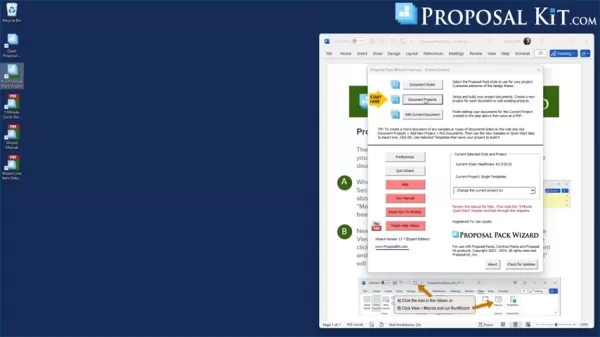 Unlock Success with AI-Powered Proposal Writing: Your Definitive Guide
In today's competitive business landscape, effective proposal creation can make or break deals. Proposal Kit revolutionizes this process through its cutting-edge AI integration with ChatGPT, enabling professionals to craft persuasive proposals with u
Unlock Success with AI-Powered Proposal Writing: Your Definitive Guide
In today's competitive business landscape, effective proposal creation can make or break deals. Proposal Kit revolutionizes this process through its cutting-edge AI integration with ChatGPT, enabling professionals to craft persuasive proposals with u
